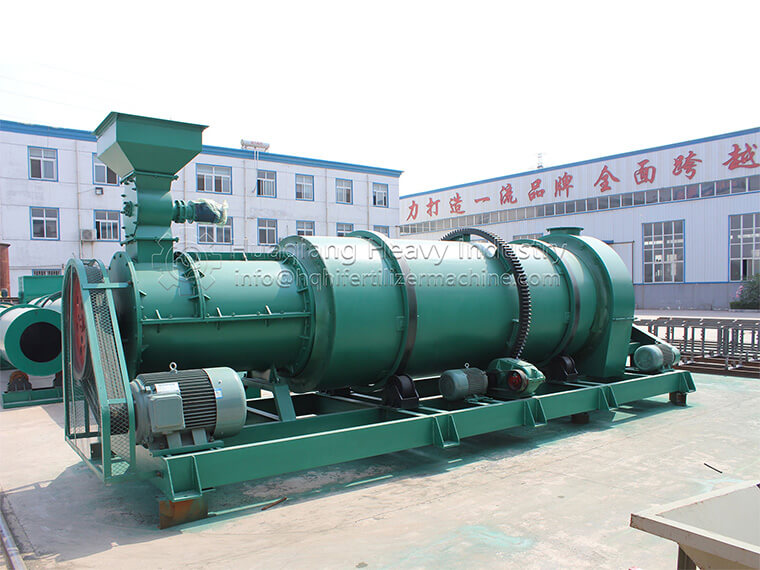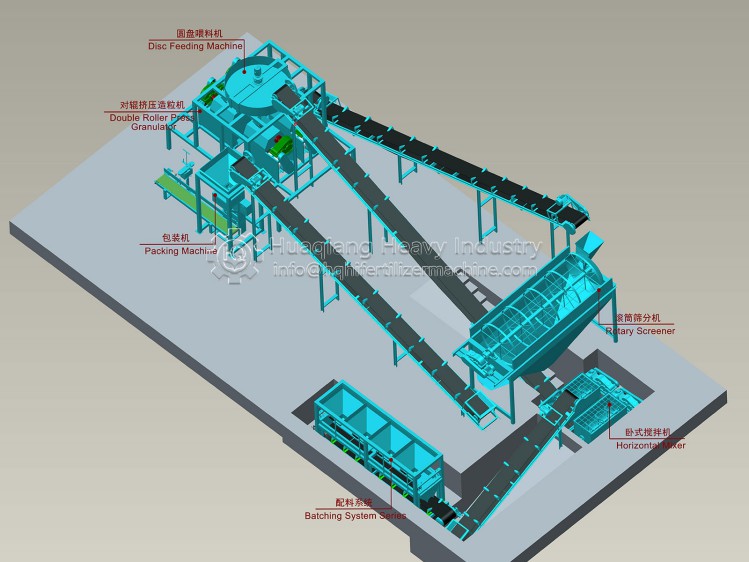The granulation process of drum granulator in compound fertilizer production line
Compound fertilizer refers to a type of compound fertilizer that is made solely by chemical methods, with at least two of the three nutrients of nitrogen, phosphorus, and potassium indicating their amounts. Compound fertilizers have the advantages of high nutrient content, fewer side components, and good physical properties. They play a very important role in balanced fertilization, improving fertilizer utilization efficiency, and promoting high and stable crop yields. But it also has some drawbacks, such as its nutrient ratio is always fixed, and the types, quantities, and proportions of nutrients required by different soils and crops are diverse.
The process flow of small-scale Organic fertilizer production equipment is as follows: Organic fertilizer raw materials enter the semi wet material grinder for grinding after fermentation, and then add elements such as nitrogen, phosphorus and potassium to make the mineral elements contained meet the required standards, and then there is a mixer for mixing, and then enter the Organic fertilizer granulator for granulation, drying after coming out, screening through the screening machine, packaging qualified products, and returning unqualified products to the Organic fertilizer granulator for granulation.
The drum granulator is a molding machine that can manufacture materials into specific shapes. The drum granulator is one of the key equipment in the compound fertilizer industry, suitable for cold and hot granulation as well as large-scale production of high, medium and low concentration compound fertilizers. The main working method is wet granulation of pellets. By using a certain amount of water or steam, the basic fertilizer is humidified in the cylinder and undergoes a thorough chemical reaction. Under certain liquid phase conditions, with the help of the rotational motion of the cylinder, the material particles are squeezed and agglomerated into balls.
The drum granulator utilizes the high-speed rotating mechanical stirring force and the resulting aerodynamic force to continuously mix, granulate, spheroidize, and compact fine powder materials in the machine, thus achieving the purpose of granulation. This granulation method results in higher ball forming rate, more beautiful particles, and energy saving.
The drum granulator is particularly suitable for granulating lightweight fine powder materials. The finer the basic particles of fine powder materials, the higher the sphericity of the particles, and the better the ball forming quality. It is generally required that the particle size of the material before granulation should be less than 200 mesh. Typical application materials include chicken manure, pig manure, cow manure, charcoal, clay, kaolin, etc.

.jpg)


.jpg)


.jpg)
